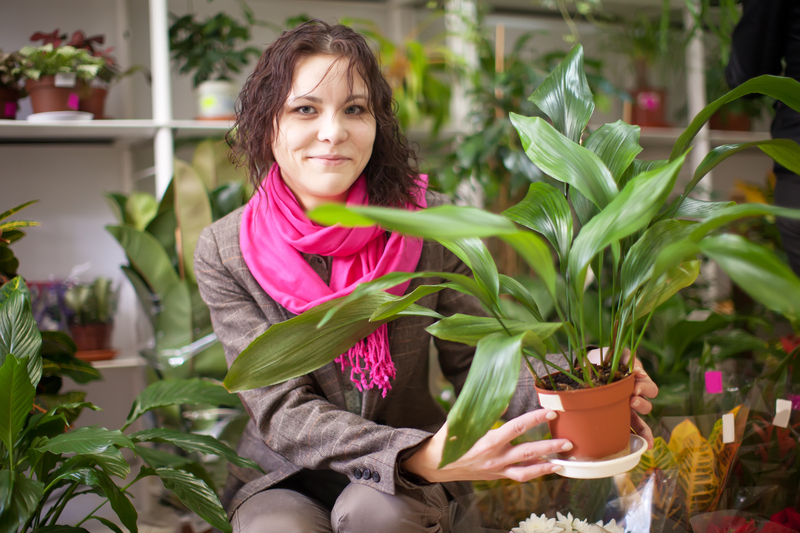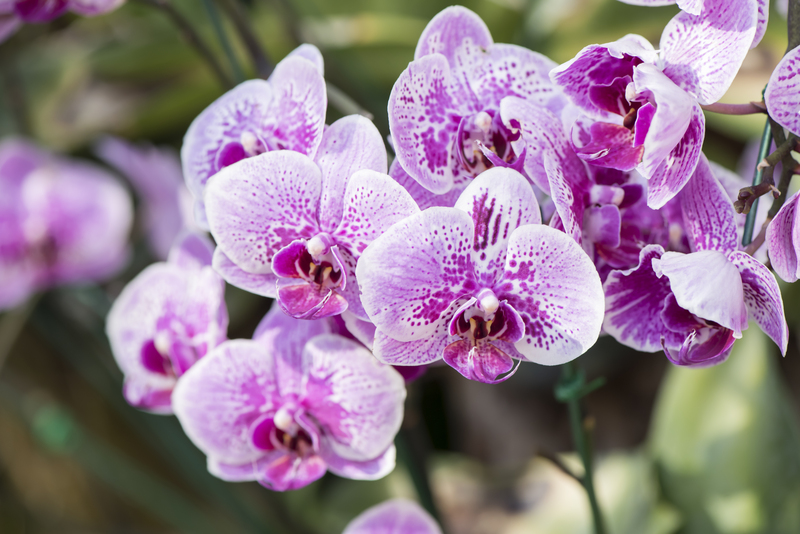Container Gardening: Bringing Nature to Your Doorstep
Posted on 18/06/2025
Container Gardening: Bringing Nature to Your Doorstep
In a world dominated by concrete jungles and ever-shrinking outdoor spaces, container gardening stands as a beacon for nature lovers, urban dwellers, and green thumbs alike. This innovative gardening technique is more than a trend; it's a sustainable lifestyle choice that brings the beauty and serenity of nature right to your doorstep.
What is Container Gardening?
Container gardening, as the name suggests, is the practice of growing plants in containers instead of directly in the ground. These containers can be pots, planters, barrels, buckets, or even repurposed household items. Container gardens are versatile and accessible, making them perfect for balconies, patios, rooftops, windowsills, and even indoors.
Why Choose Container Gardening?
- Flexibility: Move your plants around to capture the best sunlight or to redesign your space instantly.
- Space Efficiency: Container planting is ideal for small areas, such as apartments or urban homes.
- Pest and Disease Control: Isolating individual plants minimizes the spread of pests and diseases.
- Soil Management: You have complete control over the soil type and quality, which reduces the risk of weeds and poor nutrition.
- Year-round Gardening: Easily bring containers indoors during colder months to enjoy year-round growth.

The Many Benefits of Container Gardening
Beyond aesthetic appeal, container gardening offers numerous advantages. It's perfect for beginners eager to develop their green thumb, and seasoned horticulturists who want to experiment with unique plant varieties.
- Mental Well-Being: Tending plants reduces stress and enhances mindfulness. Your miniature garden becomes a sanctuary of peace at your doorstep.
- Easy Maintenance: With containers, you can optimize water usage and reduce weeding, resulting in less work and more enjoyment.
- Accessibility: Containers can be elevated for anyone with mobility challenges, bringing the joy of gardening to all ages and abilities.
- Improve Air Quality: Indoor and outdoor containers help purify the air, infusing your environment with fresh oxygen and natural scents.
- Personalized Style: Creatively mix flowers, herbs, vegetables, and decorative pots to match your unique taste and space constraints.
Top Plants Perfect for Container Gardens
Selecting the right plants is crucial for a successful container garden. Here are some popular and easy-to-grow options:
Herbs:
- Basil: A kitchen staple, basil thrives in pots on sunny windowsills and balconies.
- Mint: Grows vigorously in containers and requires little attention.
- Rosemary: Hardy and aromatic, great for both cooking and aesthetic appeal.
- Parsley: Refreshes any dish and grows easily in small pots.
Vegetables:
- Cherry Tomatoes: Compact varieties yield an abundance of flavorful fruits.
- Salad Greens: Lettuce, spinach, and arugula fit perfectly in shallow containers.
- Peppers: Colorful and spicy, requiring moderate space and sunlight.
- Radishes: Fast-growing and low-maintenance.
Flowers:
- Petunias: Vibrant cascading blooms ideal for hanging baskets.
- Begonias: Shade-tolerant and profusely blooming.
- Marigolds: Hardy and pest-repellent with brilliant golden hues.
- Pansies: Cool-weather favorites with cheerful flowers.
Indoor Plants:
- Snake Plant: Extremely hardy and purifies interior air.
- Pothos: Low-light tolerant and great for shelves or hanging planters.
- Peace Lily: Elegant blooms, thrives in indirect light.
How to Start Your Container Gardening Journey
Step 1: Choose the Right Container
Containers come in countless shapes and materials: terracotta, ceramic, plastic, wood, metal, or even upcycled household objects. When selecting containers, ensure they have adequate drainage holes to prevent waterlogging. Remember, larger plants generally require bigger containers to allow their roots to spread and thrive.
Step 2: Pick Suitable Potting Mix
Ordinary garden soil isn't ideal for container gardening. Use a high-quality, lightweight potting mix designed to retain moisture while allowing proper airflow for roots. Add compost or organic matter to enrich the soil for vegetables and herbs.
Step 3: Select Your Plants
Decide which container garden plants best suit your lifestyle, environment, and desired yield. Consider sunlight, shade, water needs, and compatibility if mixing plant varieties within the same pot.
Step 4: Planting and Arranging Your Containers
Place a layer of gravel or broken clay pots at the bottom of each container to aid drainage. Fill with your chosen potting mix, then gently position your plants. Leave sufficient space between the plants for air circulation and future growth.
Step 5: Watering and Fertilizing
Regular watering is essential, as containers dry out faster than garden beds. Water your pots thoroughly until water drains from the bottom. Use liquid fertilizers or organic compost to feed your plants every 2-4 weeks for optimal results.
Step 6: Pruning and Maintenance
Remove dead leaves and faded flowers to encourage more blooms or fruiting. Check for pests and deal with them promptly using natural methods like neem oil or insecticidal soap.
Design Tips for a Stunning Container Garden
- Mix Heights and Textures: Combine tall grasses, cascading flowers, and bushy herbs for visual interest.
- Color Coordination: Match plants to complement your home's palette--warm reds and oranges for energy, cool blues and purples for tranquility.
- Layering: Use risers or plant stands to create a tiered look for depth and variety.
- Theme Gardens: Try herb-only, succulent, or pollinator-attracting flower pots to suit your interests.
- Edible Landscapes: Combine ornamental and edible plants, such as chard with petunias, for beauty and utility.
- Seasonal Rotation: Change out plants seasonally for continual freshness--spring bulbs, summer veggies, autumn mums, and winter evergreens.
Common Challenges and Solutions in Container Gardening
Poor Drainage
Containers without proper drainage cause root rot. Always opt for pots with drainage holes. If necessary, drill extra holes and use a base tray to catch runoff.
Pest Infestation
Inspect your plants weekly. Use organic pest controls such as insecticidal soap and encourage beneficial predators like ladybugs.
Under or Overwatering
A regular watering schedule mitigates both risks. Test moisture by sticking your finger 2 inches into the soil; water only if it feels dry.
Nutrient Deficiencies
Because container soils deplete nutrients faster, regularly replenish soil or feed with balanced, slow-release fertilizers.
Limited Sunlight
Assess your site's sun exposure before planting. Choose plants adapted to available light, or move containers to sunnier locations as needed.
Eco-Friendly and Upcycled Container Ideas
Give new life to old items:
- Tin Cans: Paint and punch holes for drainage; perfect for herbs and small flowers.
- Mason Jars: Great for succulents and cacti displayed indoors.
- Old Boots or Shoes: Quirky planters for trailing vines or small blooms.
- Wooden Crates: Stackable and rustic for a patio potager look.
- Teapots and Crockery: Charming centerpieces for balconies and tabletops.
Repurposing containers is not just cost-effective, but it also reduces waste and allows your creativity to shine.
Year-Round Enjoyment: Extending Container Gardening Through the Seasons
With a strategic rotation of plants, your container garden can provide all-seasons interest:
- Spring: Bulbs like tulips, daffodils, and hyacinths awaken your garden after winter.
- Summer: Fill pots with tomatoes, peppers, and vibrant petunias or marigolds.
- Autumn: Transition to ornamental cabbages, mums, or kale.
- Winter: Evergreens, dwarf conifers, and pansies provide visual appeal even in the cold.
Move delicate pots indoors or to a sheltered spot as temperatures drop. For outdoor winter pots, choose frost-resistant containers and wrap them in burlap for added insulation.

Container Gardening for Small Spaces
Apartment dwellers and those with small patios can maximize every inch with creative solutions:
- Vertical Gardens: Hang planters on walls or railings for herbs and cascading flowers.
- Hanging Baskets: Suspend from ceilings or hooks to free up floor space.
- Window Boxes: Ideal for herbs, salad greens, and cheerful annuals.
- Stackable Pots: Create multi-tiered displays for volume in limited areas.
With these smart strategies, container gardeners can enjoy lush greenery and color--even in the tiniest spaces.
Conclusion: Embrace Container Gardening and Transform Your World
Container gardening is more than just a hobby--it's a gateway to bringing nature closer to your home, regardless of where you live. Flexible, accessible, and endlessly customizable, container gardens allow everyone to cultivate beauty, wellness, and even a bounty of fresh produce.
Whether you're planting your first basil seedling on a apartment balcony, crafting an artistic floral display for your patio, or transforming a small terrace into a feast for the senses, the joys of container gardening are within reach. Start small, dream big, and unlock the limitless potential of your green oasis--right outside your door.
Frequently Asked Questions About Container Gardening
- What's the best container size for vegetables? Most vegetables do well in 12-18 inch deep containers, but check specific requirements for each plant.
- How often should I water container plants? Generally, check daily; water when the top few inches of soil are dry.
- Can I mix different plants in one container? Yes, as long as they have similar sunlight and water needs.
- What's the easiest plant to start with? Herbs like basil, mint, and chives are perfect for beginners.
- Do I need special fertilizer for container gardens? Use a balanced, slow-release fertilizer or organic compost suited for the type of plants you're growing.
Start your container gardening journey today and bring flourishing nature to your doorstep!

